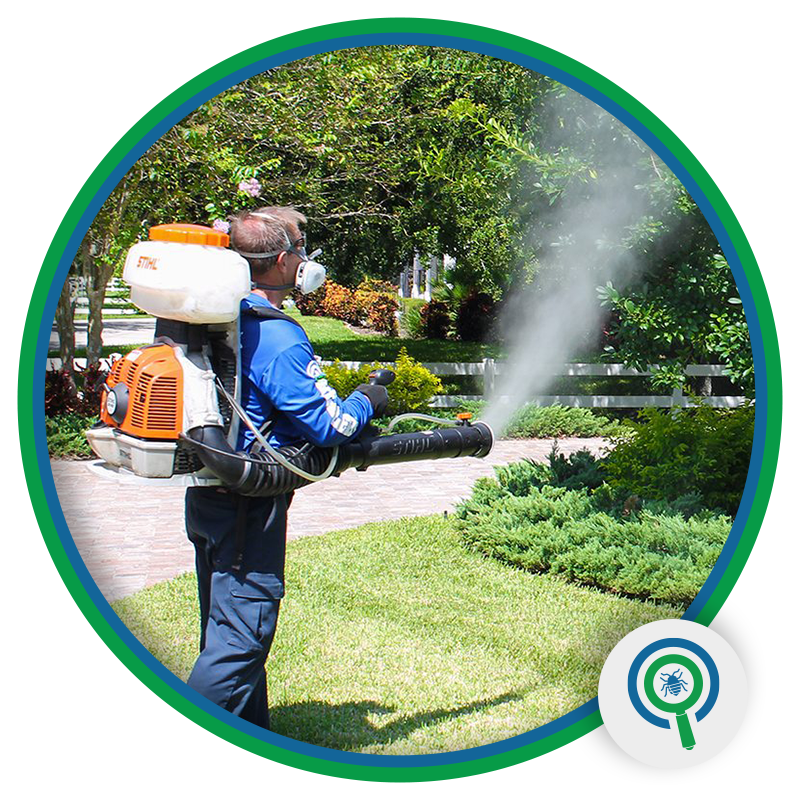
Learn About Ants
Frequently Asked Questions
-
How do I tell the difference between a flying ant and a winged termite?
Flying ants and winged termites look very similar and can be difficult for homeowners to tell apart. The first thing to know about either species is that all reproductive members of either an ant colony or termite colony have wings. The two species of ant and termites that are most often confused with each other are the carpenter ant and subterranean termites. However, if you look closely there are some visible differences between the two species that can help you to identify if the winged intruder is a termite or ant!
- Take a close look at the antennae - carpenter ants have obviously bent antennae while the termite’s antennae are straight.
- Reproductive carpenter ants and termites each have two pairs of wings (four wings altogether). The termite’s front pair and back pair of wings are all the same length.
- Carpenter ant wings are different lengths; their back wings are much shorter in length than their front wings.
- Carpenter ant wings have a brown tint, while termite wings are white or translucent in color.
- The reproductive termite has a straight body- there is no distinction between their three body segments. The reproductive carpenter ant has a pinched waist and three very distinctive body segments.
-
Where do ants nest?
Ants will nest in different areas depending on their exact species.
- Caribbean crazy ants typically nest in the soffits of houses, under landscaping timbers, rocks, wooden debris, in underground electrical tunnels, and in the cracks of cement.
- Red imported fire ants prefer to build mounds in open sunny areas but can also be found nesting inside of rotting logs and stumps.
- Thief ants nest near other ant colonies. It’s common to find their nests underneath rocks and logs; inside of wall voids and behind baseboards.
- White-footed ants nest under almost anything that is lying on the ground including landscape timbers, tree stumps, and heavy vegetation. Inside they can be found nesting behind walls voids and inside of potted plants.
- Ghost ants nest outside under stones, logs, firewood or in potted plants. When nesting inside of a home they can be found behind baseboards, wall voids, and cabinets.
- Pharaoh ants nest in warm humid areas that are close to food and water sources; they can typically be found inside of wood, behind walls voids, baseboards, and crawl spaces.
- Bigheaded ants are typically only found nesting outside under logs, mulch, firewood, patio blocks or stones. If they do find their way inside they will nest under carpeting or behind baseboards.
- Carpenter ants nest inside of hollowed out dead trees and in firewood and fence posts. Inside, carpenter ants can be found tunneling through and nesting inside of walls voids, crawl spaces and even foam insulation.
- Argentine ants nest under logs and other organic material. They can also be found under concrete slabs and among construction debris.
-
Are ants dangerous?Not all ants are dangerous. In fact, several are annoying but pose no significant threat to health or property. Some exceptions are fire ants (their sting packs a powerful punch), Pharaoh ants (dangers associated with these pests are mentioned above), and carpenter ants (they’re not dangerous to people but they will damage homes and businesses).
-
Why do I have an ant problem?
Like most things we consider to be pests, ants are found living in, on, or near properties and homes that offer them easy access to their basic needs - food, water, and shelter. Once ants are on your property attracted by things like garbage, gardens, pet food, and nesting sites, it is only a matter of time before they invade your home while about and about foraging for food and satellite nesting sites. Many species of ants will also invade homes when the weather outside makes it so they can’t live comfortably; very hot, very dry, or very wet weather will drive ants indoors.
-
How do I get rid of ants?If you have found that ants are living on your property or inside of your home, contact Keller’s Pest Control for help. We have the skills, expertise, and effective pest control solutions needed to protect people and property from invasive ants. To learn more about our ant solutions, give us a call today at Keller’s Pest Control.

-
 Caribbean Crazy AntsCaribbean crazy ants received their name from their quick, erratic movements. These ants are golden-brown to reddish-brown in color and have the unique ability to cover themselves in formic acid in order to protect themselves from their natural predator- the fire ant. Caribbean crazy ants are active when the temperature is above 60 degrees and live in very large colonies with multiple queens making these ants particularly difficult to eradicate from properties.
Caribbean Crazy AntsCaribbean crazy ants received their name from their quick, erratic movements. These ants are golden-brown to reddish-brown in color and have the unique ability to cover themselves in formic acid in order to protect themselves from their natural predator- the fire ant. Caribbean crazy ants are active when the temperature is above 60 degrees and live in very large colonies with multiple queens making these ants particularly difficult to eradicate from properties. -
 Red Imported Fire Ants
Red Imported Fire AntsRed imported fire ants are an extremely aggressive type of ant that is attracted to warm, humid environments and are active year-round. Dwelling in underground nests (typically located in open sunny areas), these fire ants will sting anything they deem a threat to their colony or that they come in contact with. A small species of ant, they are darkish-red in color.
-
 Ghost Ants
Ghost AntsDifficult to see because of their small size and coloring, ghost ants are aptly named. These tiny ants have a dark-colored head and thorax, while in contrast, their abdomen and legs are almost translucent in color. Ghost ants are a nuisance pest that are found living in warm climates and are active year-round.
-
 Thief AntsSmall in size and known for their habit of stealing larvae and pupae from other ant nests, thief ants are shiny, smooth ants that range in color from yellow to bronze to dark brown. They create their nests beside other ant colonies so that they can raid them. Interestingly enough, they create tiny tunnels to gain access to the neighboring ant colonies they intend to steal from.
Thief AntsSmall in size and known for their habit of stealing larvae and pupae from other ant nests, thief ants are shiny, smooth ants that range in color from yellow to bronze to dark brown. They create their nests beside other ant colonies so that they can raid them. Interestingly enough, they create tiny tunnels to gain access to the neighboring ant colonies they intend to steal from. -
 Pharaoh AntsPharaoh ants carry and transmit serious disease including salmonella and Streptococcus. For this reason, they are considered more than a nuisance pest. Really, they could be considered dangerous pests especially in hospitals (where they’re known to invade IVs and contaminate wounds) and environments that must remain sterile. Pharaoh ants have pale yellow to red colored bodies and their abdomens are almost black in color. The queens are typically darker in color than the workers.
Pharaoh AntsPharaoh ants carry and transmit serious disease including salmonella and Streptococcus. For this reason, they are considered more than a nuisance pest. Really, they could be considered dangerous pests especially in hospitals (where they’re known to invade IVs and contaminate wounds) and environments that must remain sterile. Pharaoh ants have pale yellow to red colored bodies and their abdomens are almost black in color. The queens are typically darker in color than the workers. -
 Bigheaded AntsBigheaded ants are identified as either being a minor worker or a major worker. The minor workers’ body regions are proportionate in size; while the major workers’ heart-shaped head is disproportionately larger than the rest of the body. Bigheaded ants are considered to be nuisance pests and nest outside. They can cause foundational issues, on occasion, when nesting close to your home. Rarely are they found inside except for when they accidentally enter while foraging for food sources.
Bigheaded AntsBigheaded ants are identified as either being a minor worker or a major worker. The minor workers’ body regions are proportionate in size; while the major workers’ heart-shaped head is disproportionately larger than the rest of the body. Bigheaded ants are considered to be nuisance pests and nest outside. They can cause foundational issues, on occasion, when nesting close to your home. Rarely are they found inside except for when they accidentally enter while foraging for food sources. -
 White-Footed AntsThe white-footed ant is a very small nuisance ant that has a dark brown to black colored body and distinctive whitish-yellow feet. These ants are most active during the rainy seasons when their main food source is most abundant. White-footed ants feed on honeydew which is produced by aphids as they feed on plant sap.
White-Footed AntsThe white-footed ant is a very small nuisance ant that has a dark brown to black colored body and distinctive whitish-yellow feet. These ants are most active during the rainy seasons when their main food source is most abundant. White-footed ants feed on honeydew which is produced by aphids as they feed on plant sap. -
 Carpenter AntsWood destroying carpenter ants are those large ants (typically black or dark colored) that excavate wood for the purpose of creating galleries. Unlike termites that actually consume wood, carpenter ants tunnel through wood in order to establish nesting spots where they focus on growing their numbers. They feed on honeydew, other insects, and provisions they pilfer from kitchens and pantries. Carpenter ants often enter structures that have wood that has been damaged by water or that is rotting. Left unaddressed, carpenter ants can cause extensive damage and for that reason are considered more than a nuisance.
Carpenter AntsWood destroying carpenter ants are those large ants (typically black or dark colored) that excavate wood for the purpose of creating galleries. Unlike termites that actually consume wood, carpenter ants tunnel through wood in order to establish nesting spots where they focus on growing their numbers. They feed on honeydew, other insects, and provisions they pilfer from kitchens and pantries. Carpenter ants often enter structures that have wood that has been damaged by water or that is rotting. Left unaddressed, carpenter ants can cause extensive damage and for that reason are considered more than a nuisance. -
 Argentine AntsArgentine ants are small ants that are shiny dark brown or shiny black in color. These ants live together in extremely large colonies. A single Argentine ant colony can have thousands and thousands of workers and hundreds of queens living and working together. Argentine ants will invade homes in very large numbers and contaminate food sources.
Argentine AntsArgentine ants are small ants that are shiny dark brown or shiny black in color. These ants live together in extremely large colonies. A single Argentine ant colony can have thousands and thousands of workers and hundreds of queens living and working together. Argentine ants will invade homes in very large numbers and contaminate food sources.

Pests Beware. We Care!
Trust Keller's Pest Control For Reliable Service With Integrity
-
No Obligation Estimates
-
Family-Owned & Operated
-
29+ Years in Business
-
Knowledgeable Technicians
-
Customer Top-Rated
-
No Contracts


-
"Bed Bugs Gone"Keller’s Pest Control is by far the best service we’ve ever had! Patrick Keller is professional, thorough & amiable. The bugs have been gone ever since they first serviced us! We will continue our service can’t recommend them enough.- Sara M.
-
"10+ Year Customer"I’ve used Keller’s for pest control at my house for more than 10 years. They have always provided excellent, speedy, and complete service. It's pleasure to do business with them.- Bob W.
-
"They Explained Everything"Keller's was very quick to respond to my call and came to the house at my convenience. They did such a great job at explaining things and I went with the quarterly service plan. Very reasonable pricing and gave us piece of mind.- Ron Q.
-
"A+ Communication"I've been using Keller's for over three years now and they've been great. I've had some bug problems and they have been very responsive at fixing them even if it meant showing up out of cycle to handle. Communication is key and they get an A+.- Jeff I.
-
"Outlined Treatment Plan"The technician was great and clearly explained what issues we were having in our home. They outlined the treatment plan to address those issues and the time frame. Very friendly and we look forward to a great relationship as their happy customer.- Kevin A.
-
"Knowledgable & Efficient"The technician was so knowledgeable about my bed bug issue. They came in with a heat machine and eliminated the bug quickly and efficiently. I was able to get my rental back in action the next day! Great company.- Christopher W.
-
"4+ Year Customer"We have used them for over 4 years. Our technician is very knowledgeable and professional. We are gone from the property sometimes as long 4 months and never have any pest issues. We highly recommend Keller’s Pest Control.- Bill B.
-
"Longtime Customer"We have been working with Keller’s for a long time and could not be happier with their service and expertise. They are responsive and honest. We appreciate the technicians and the office team. Thank you, Keller’s Pest Control!- Christine S.
-
"Exceptional Company"Keller's Pest Control is exceptional in every way! Their team is knowledgeable, professional, and genuinely dedicated to ensuring a pest-free home. From quickly addressing serious issues to providing regular, reliable maintenance, they’ve exceeded.- Aleks S.

Go With the Team You Trust.
See Our Proud Affiliations, Certifications & Awards

-
 Pest Library
Pest Library -
 Read Our Blog
Read Our Blog -
 Save on Service
Save on Service
















